
Smartphones are evolving at a rate that is difficult to grasp. With the beginning of this year, rose the fad of 48-megapixel photography, which at that time, appeared to lead the industry for the whole of 2019. However, with a quarter of the year still left to unwind, the trend of 48MP photography has started to lose its relevance. Thanks to two smartphone brands – Realme and Xiaomi, which are tirelessly competing to make 64MP the new standard for smartphone photography. We’re not sure the trend will stay relevant but both of these brands are sweating it out to make the 64MP camera technology a commodity by bringing them on devices at the higher end of the mid-range.
Xiaomi’s sub-brand Redmi launched the 64MP camera setup on the Redmi Note 8 Pro on August 29, 2019. Realme, on the other hand, has yet to announce a launch date for the Realme XT, but in the race to beat Xiaomi, the company has shared pre-production units of the Realme XT with the media fraternity in India. This has been done majorly with the intention of making a Realme smartphone the instrument of the world’s first encounter with a 64MP camera.
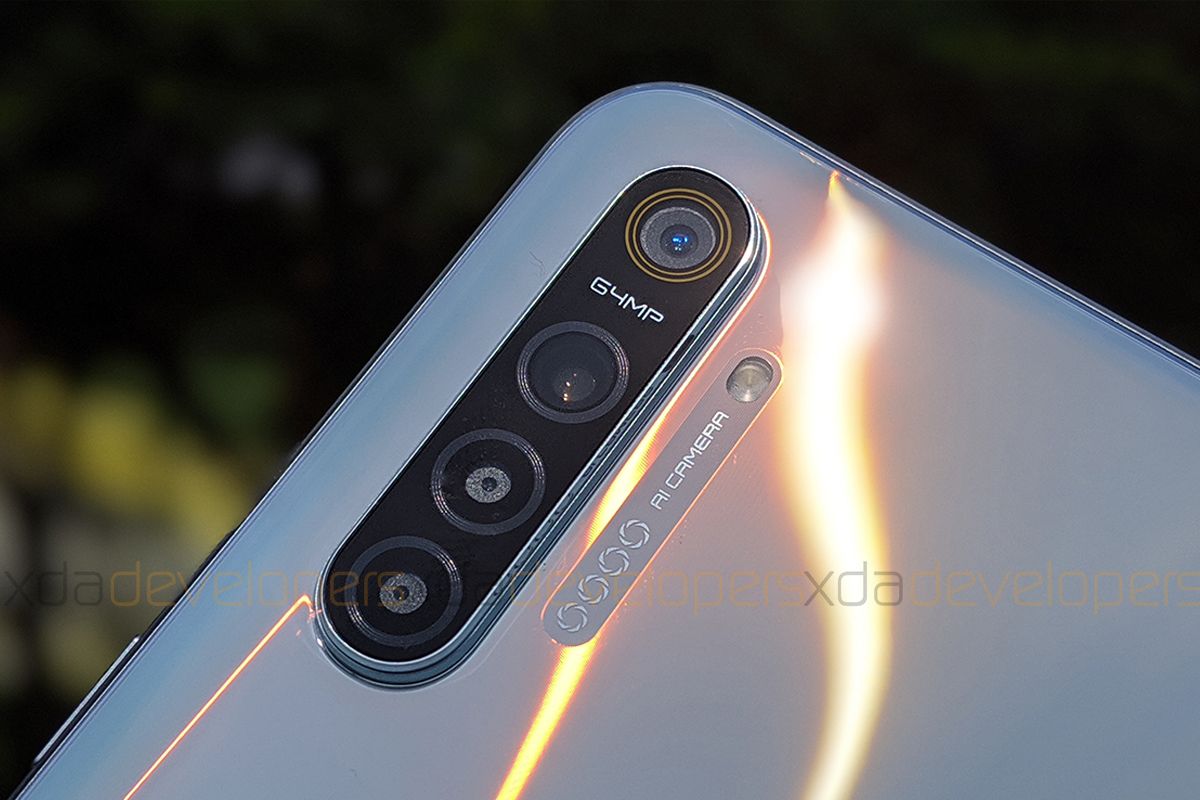
As per Realme, the Realme XT will not be launching in India until mid-October so this is distinctly a measure to keep the prospective consumers hyped about their 64MP technology. The step should also keep Xiaomi India on its toes as the company’s MD Manu Jain recently confirmed that the Redmi Note 8 Pro will be launching in India soon after the launch in China. We’re not sure when that’s likely to happen but thanks to Realme, we have our first (technically, the second, since we were able to try out the 64MP camera earlier this month but with restrictions) hands-on experience with a 64MP camera smartphone.
Before beginning with the specific of the camera on the Realme XT, here’s a peek at the specifications, design, and other aspects of the smartphone.
Realme XT Specifications
| Specifications | Realme XT |
|---|---|
| Display |
|
| SoC |
|
| RAM | 4GB/6GB/8GB |
| Storage | 64GB/128GB UFS 2.1 Dedicated microSD slot |
| Battery | 4000mAh, 20W VOOC 3.0 fast charging |
| Fingerprint Sensor | In-display fingerprint |
| Rear Camera |
|
| Front Camera |
|
| Android Version | ColorOS 6.0.1 based on Android 9 Pie |
Realme XT: Not a Realme X Successor
The Realme XT is a contender for the top spot in Realme’s catalog of the smartphone. even though the company insists that it is neither a replacement nor a successor to the Realme X (our review). The Realme XT, as also evident from the suffixation with the letter T, can be seen as a turbo variant of the Realme X in terms of the internal performance. Just like the Realme 5 Pro, Realme XT has been updated with a Snapdragon 712 SoC, which brings a 10% performance upgrade and a nearly 35% GPU boost over the Snapdragon 710 mobile platform which powers the Realme 3 Pro and the Realme X.
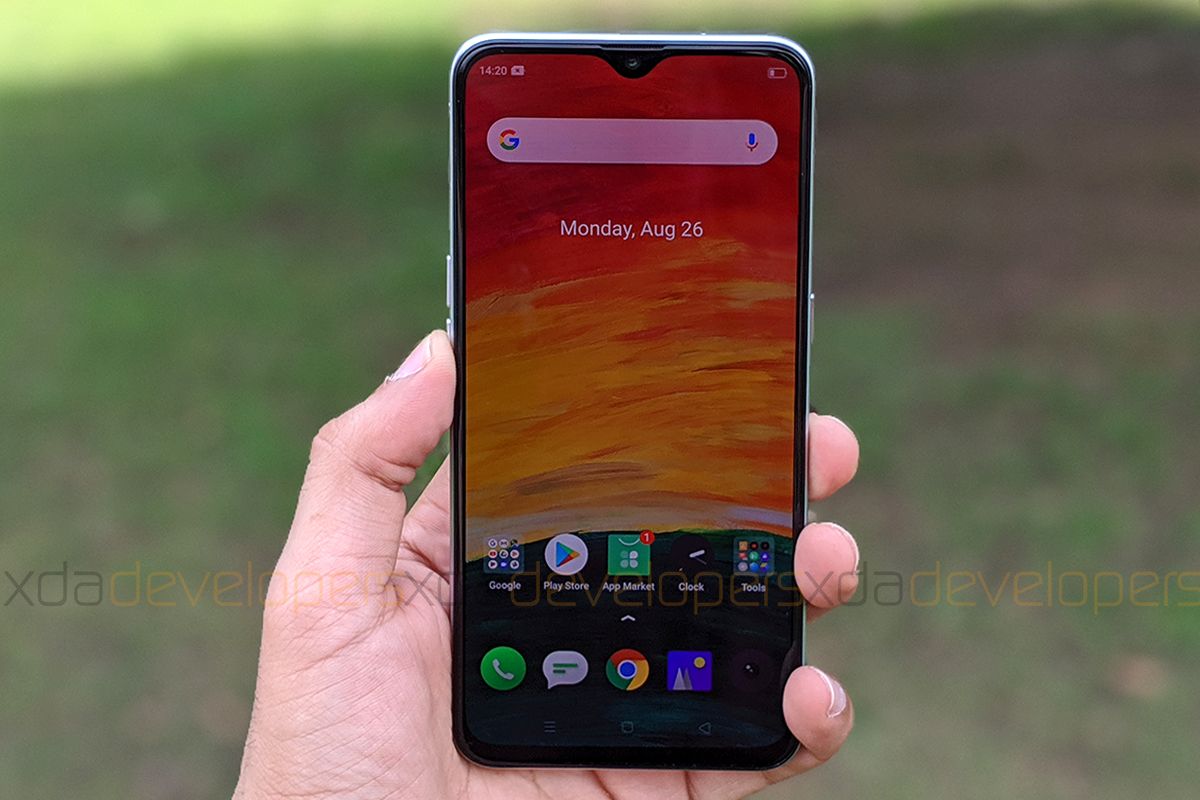
Apart from the reinforced performance and the conspicuous improvement on the primary sensor, the Realme XT comes with a 6.4-inch Super AMOLED display but instead of going for a pop-up camera, Realme has conservatively opted for a tear-drop notch. The display – essentially the same in terms of quality as the Realme X but only a tad bit smaller – also houses an in-display fingerprint scanner, which Realme says is slightly bigger compared to the X.
The Realme XT also bears the honor of being Realme’s first smartphone with a glass back. Erstwhile smartphones including the premium Realme X were graced with incredibly charming polycarbonate backs, some of which were too easy to be mistaken for glass and the company had previously argued that polycarbonate brings more durability. But due to the notion of glass being associated with a premium tag, the company seems to have taken the step of choosing glass over polycarbonate, favoring good looks over security. Notably, while glass is more vulnerable to breaking upon falling, polycarbonate is more likely to be scratched.
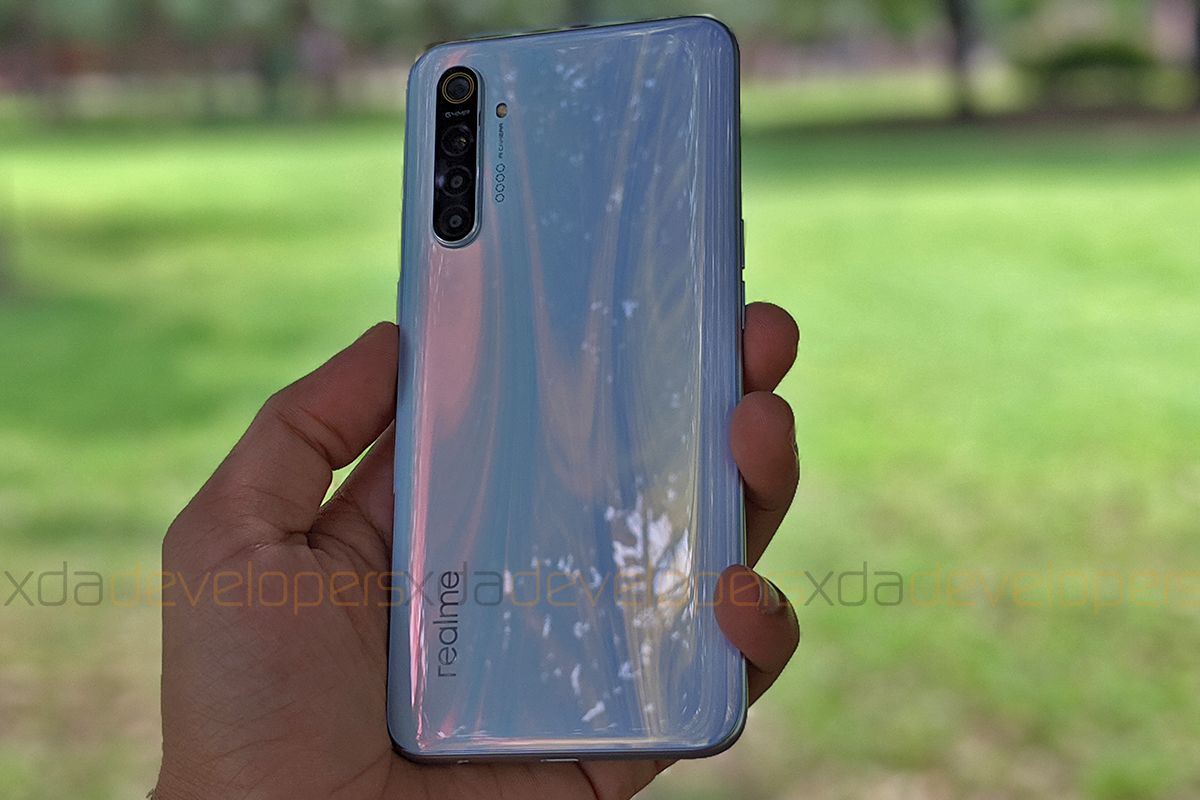


The frame which wraps around the edges is made of plastic, unlike the metal frame on the Realme X. The pattern underneath the rear glass – which is also protected by Gorilla Glass 5 – resembles hyperbolic patterns and the design appears to be an upgraded mathematical metaphor over the tan-shaped curves on the Realme 3 Pro.
Besides these changes, the Realme XT will come with storage options up to 128GB of UFS 2.1 storage as well as 4GB, 6GB, and 8GB RAM variants. We have no information on the pricing yet – and we probably won’t until October – so determining its rank in the hierarchy of Realme devices will be an implausible job. We do expect pricing to be in the ballpark of Realme X’s price, but that’s purely speculative.
Realme XT: First encounter with a 64MP smartphone camera
Realme might not beat competitor Redmi to bring the first 64MP smartphone to the market but, it has done a good job in allowing us – and the consumers by our means – form initial impressions about 64MP photography on a smartphone. You can have a closer look at these images we took, and feel free to form your own judgment. One thing to note is that while the camera hardware is more or less finalized, the software is still being worked up and Realme has assured that the final product it launches will be more refined than this one.

The 64MP setup on the Realme XT uses a Samsung ISOCELL GW1 sensor along with an f/1.8 aperture lens. Each pixel on this sensor has a size of 0.8μm but the default mode bins four pixels on a square grid into one superpixel with a size of 1.6μm. The resulting images are thus 16MP in size and as traditionally with 4-in-1 pixel binning mechanism, the intention is to increase the amount of light that enters the sensor. While our early impressions of the 64MP camera on the Realme XT was limited to indoors, we had the liberty of choosing which shots to take with the smartphone.
Apart from the 64MP sensor, the Realme XT features 8MP wide-angle sensor which expands the view to 118º wide field of view, a 2MP macro lens with a focal point at 4cm (1.6 inches) from the sensor, and a 2MP depth sensor. All of these sensors are paired with fixed-focus lens systems. Ideally, we would appreciate a telephoto setup instead of the depth sensor but there’s none and you’re limited to digital zooming.
Since this setup is exactly what we see on the Realme 5 Pro, the focus for this article is on the 64MP sensor. We’ll begin with the general performance of the 64MP camera in the day and night-time scenarios, comparing the results in the 16MP and 64MP resolutions to gauge how effective pixel binning is and then move on to compare this 64MP sensor with the 48MP Sony IMX586 sensor on the Realme 5 Pro.
Realme XT camera preview: 64MP vs 16MP

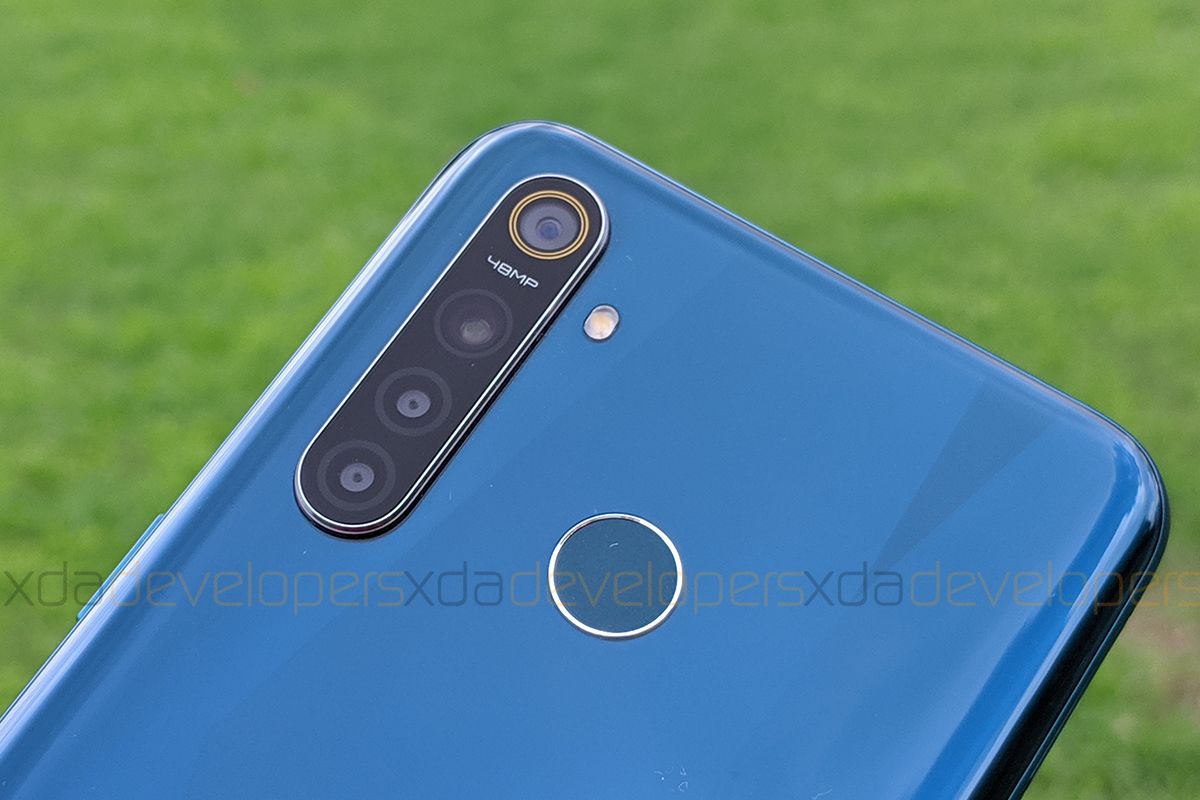
Realme XT and the Realme 5 Pro share the same rear camera setup apart from their primary sensors
In the short duration of our review of the 64MP camera photography using the Realme XT, the 64MP and the 16MP appear to be on the same level in terms of quality and detail, when looked at superficially except for the greater warmth in 16MP images. When we zoom into the images, there’s a clear distinction in terms of quality and the 64MP images are sharper. The amount of ambient light in the two modes is also comparable but a noticeable trend, in this case, is the slower shutter speed in the 64MP shots. The shutter speed of the 64MP images is nearly half (i.e. the exposure time is nearly twice) compared to the shutter speed of the 16MP images. We’re not sure if this is a lag due to the image signal processing or a conscious measure to keep the images brightly lit (since longer exposure leads to more light in the images). The ISO value remains constant and this is a good step to keep the noise levels under control. Notably, there’s an observable shutter lag of almost a second while taking 64MP images but Realme’s optimized camera software ensures that you don’t miss the shot you were aiming for.
Take a look at the comparison between 16MP and 64MP images taken with the Realme XT in daylight and feel free to zoom into the images on the Flickr album to investigate further:
When it comes to indoor lighting and night conditions, images do not differ much. You wouldn’t find any disparity in terms of the details in the images unless looked at with a keen eye. In conditions where there’s adequate illumination to light up the object, you would only find a marginal (almost ignorable) increase in exposure in the 16MP images. In very dim lighting, however, the difference becomes more visible as you will find in the last couple of images in the album below:
Realme XT vs Realme 5 Pro: Comparison between 64MP and 48MP photography
To appraise the necessity of a 64MP camera sensor on a smartphone, we take our quest to the next level by comparing the Realme XT with one of Realme’s very recently launched smartphone – the Realme 5 Pro. The latter features a 48MP Sony IMX586 sensor, which is also present on the Realme X. While Realme has been comparing the Realme XT’s performance with the Redmi K20 Pro, which also uses the same 48MP sensor, we thought the difference in the performance of both the sensors will be more visible if we choose two devices from the same company. This will allow us to ensure that software optimizations and scene detection algorithms in the Camera app do not impact our comparison in any major way.
Daylight
Starting first with the daylight comparison between images taken by the Realme XT and the Realme 5 Pro, the albums below include comparative shots at full resolutions for both the devices as well as pixel-binned images at 12MP and 16MP for the 5 Pro and the XT, respectively. The last two pairs of images in both of the albums below have been clicked with Chroma Boost mode switched on and the images in both the albums are in the same order.
In bright conditions, the images clicked by the Realme XT take a lead in both the scenarios i.e. at full resolution and after pixel binning. The Realme XT’s images have slightly more details and are visibly more vibrant. Zooming into these images allows you to see the relatively higher noise in Realme 5 Pro’s shots as compared to the ones taken with the Realme XT. Further, the images clicked with the 48MP camera have a yellow tint over them while the colors on the 64MP camera’s images are far more accurate.
By digging into the EXIF data, we can see two prominent trends. The ISO values in 16MP images taken with the Realme XT are nearly double compared to the 5 Pro’s 12MP images. The second is that in full resolution, the 64MP images have nearly twice the exposure time compared to 48MP images. The higher ISO values on the Realme XT can be blamed on the pre-production software and poor analysis of dynamic range it does of the different patches of light across the canvas. We believe this should be rectified as we approach the final launch of the phone. Another issue we also notice on images taken with the XT is its ease with which images get flared up with a reddish tinge and we’re not yet sure about the reasons behind this.
Low light and Nightscape mode
At night, the bigger Samsung GW1 sensor easily outweighs the Sony IMX586 and this holds true even though the Realme 5 Pro’s primary camera has a lower aperture of f/1.7 (lower aperture equals more exposure) compared to f/1.8 aperture of the Realme XT’s 64MP camera. At comparable values of shutter speed and ISO, the Realme XT does relatively better than the 5 Pro when it comes to exposure as well as the details in the images.
A similar trend can be observed in the comparison between 64MP and 48MP images, even though the captured images are darker than their respective pixel-binned counterparts. The Realme XT overpowers the Realme 5 Pro in these scenarios as well but the former’s tendency to flare, especially along the left edge of the viewfinder cannot be ignored.

Taking this a step further, we also compared how the two smartphones compare when it comes to the performance of the Nightscape mode. This mode captures multiple frames at different exposure levels and superimposes them for a well-defined image in low light or at night. Notably, the sensor on the Realme XT is cropped to 12MP size while taking Nightscape shots and this leads to a slight zooming effect. Images taken with the Realme XT tend to have a very high ISO value and even though they appear to be brighter compared to the Nightscape shots taken with the Realme 5 Pro, this phenomenon leads to higher noise on the former. We don’t see a consistent pattern in terms of details to have final thoughts in this case, so we’ll reserve our judgment for the final release of the smartphone.
Cropped images
As one last step before we conclude this comparison, we’ve opted to crop these images taken with 64MP and 48MP cameras to nearly 1/25th of the images’ area to compare the result more effectively. Take a look at the comparison below:
It is evident that the cropped section of the 64MP images appears to have less noise or graininess. Furthermore, the images we captured with the Realme XT appear to preserve more details and have better contrast than the images clicked with the 5 Pro. Even though the images in the night may not vary much in terms of details but the Samsung GW1 64MP sensor manages to capture more light.
Samsung ISOCELL GW1 64MP sensor on the Realme XT sets a new standard
48MP sensors such as the Sony IMX586 and the Samsung GM1 grabbed our attention at the onset of this year, but the swift upgrade to 64MP not only feels very exciting but also very empowering to the users. Not just on paper but also in tangible terms, the 64MP camera outperforms the 48MP in most respects. We see a scope of camera optimization from Realme and we expect that to happen by the time the smartphone is readied for a release. 64MP cameras appeared to be spearheading towards becoming the latest trend in the industry. The launch of the Redmi Note 8 Pro as the first commercial smartphone featuring a 64MP camera is expected to accelerate the trend and inspire more manufacturers to dip their feet into making the technology available for users.
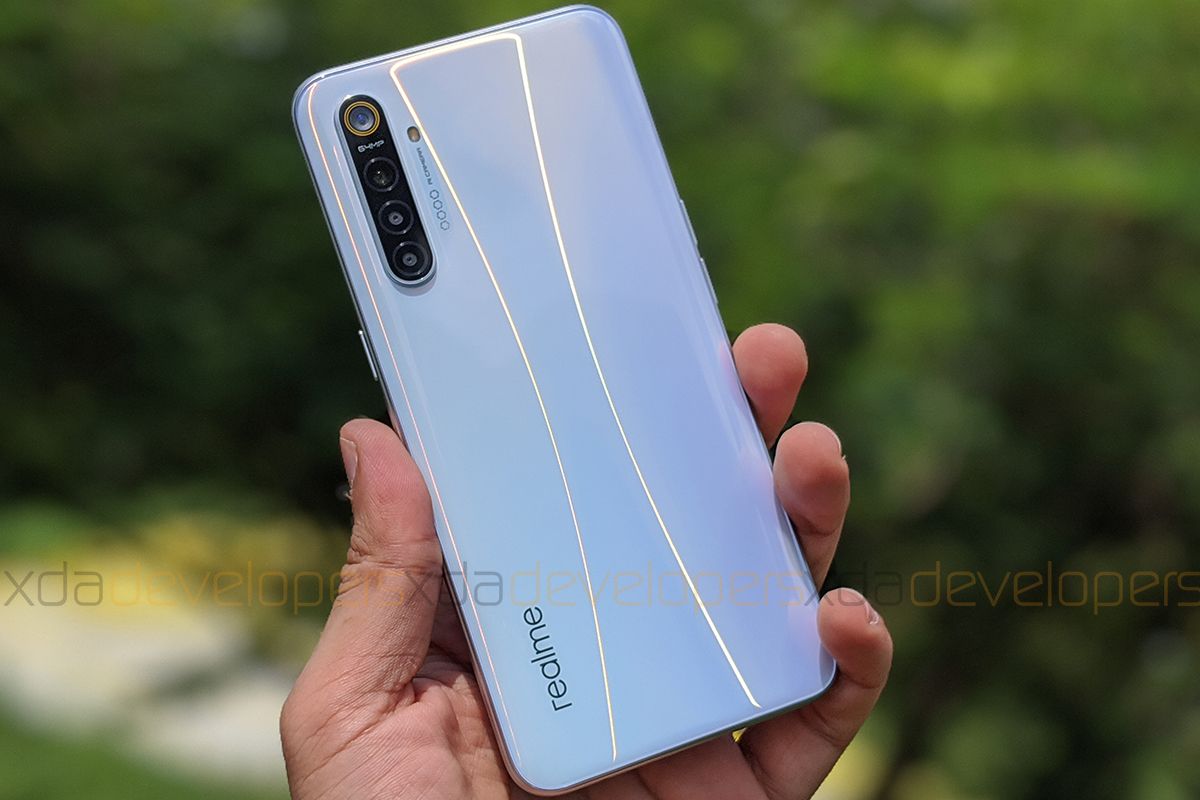
What are your opinions about the 64MP camera on the Realme XT? Which upcoming smartphone beside the Realme XT and the Redmi Note 8 Pro do you think will have a 64MP camera? Let us know in the comments below.
The post Realme XT’s 64MP camera is a prominent upgrade over 48MP cameras appeared first on xda-developers.






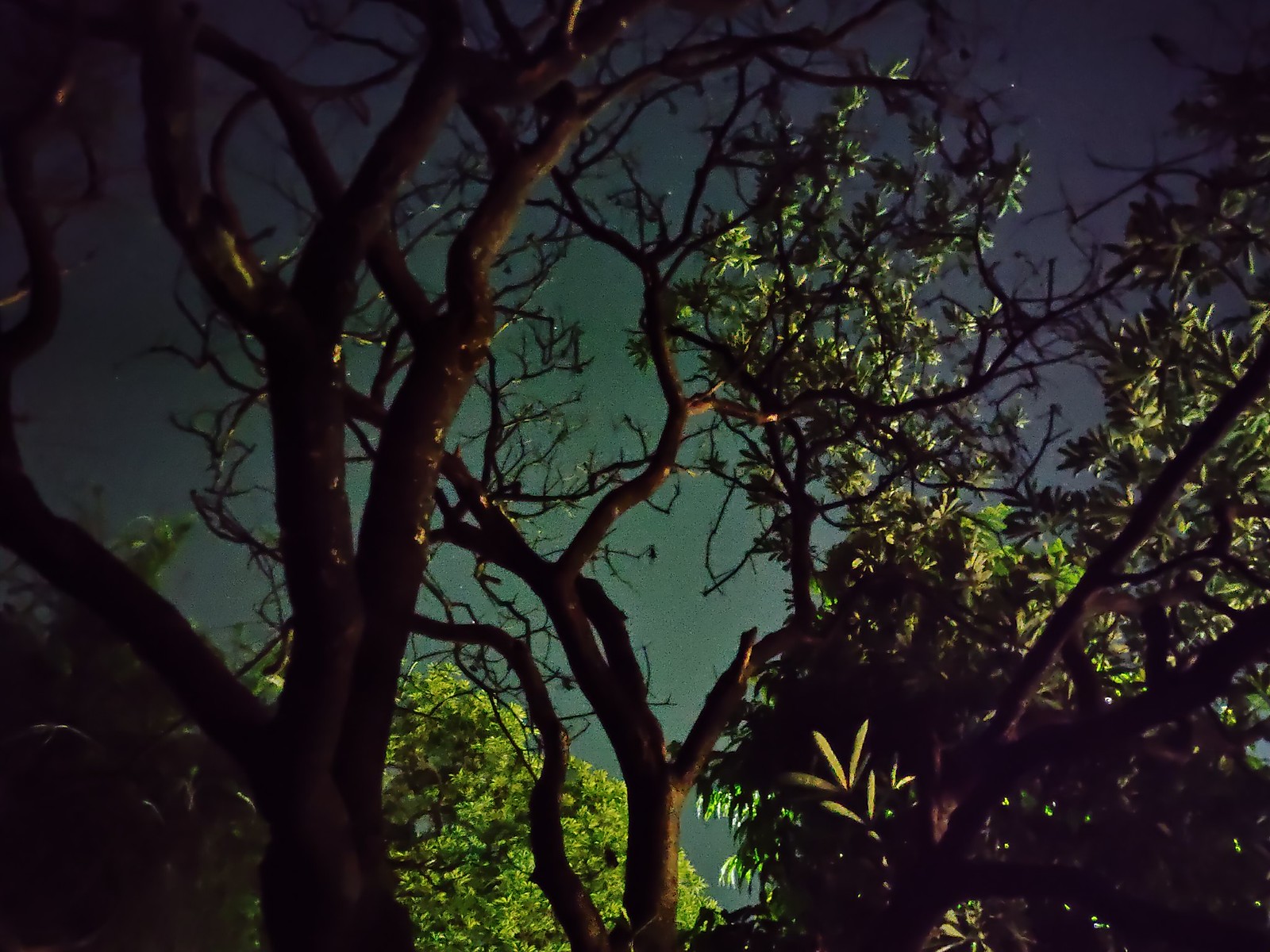


0 comments:
Post a Comment